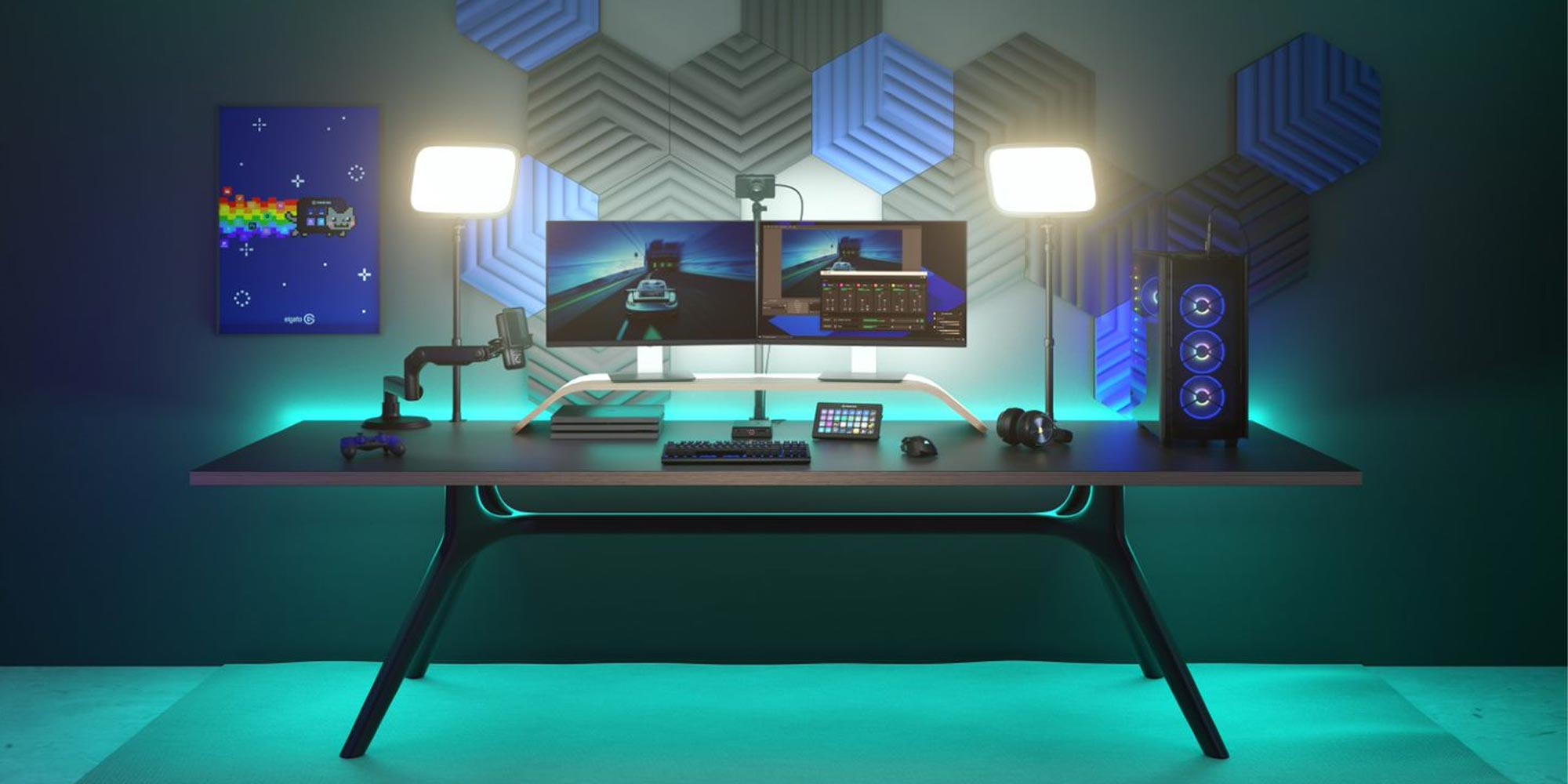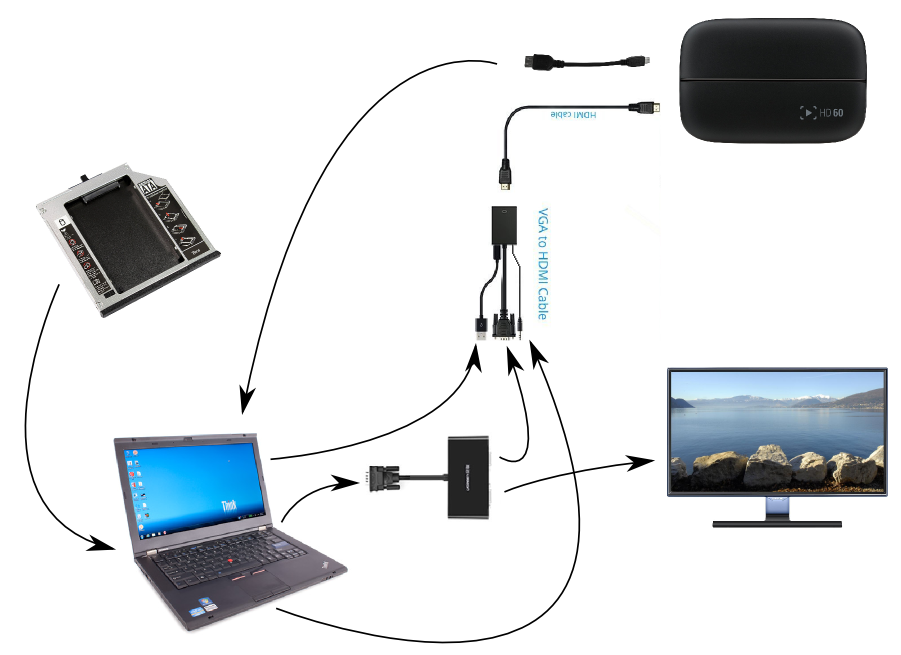Welcome to your YouTube livestreaming adventure! If you're eager to elevate your streams and engage with your audience like never before, connecting your YouTube livestream to an Elgato streaming setup is a game-changer. Whether you're a seasoned pro or just starting out, this tutorial is here to guide you through every step, making the process smooth and straightforward. So, let’s dive right in!
Requirements for the Setup

Before you jump into connecting your YouTube livestream with your Elgato setup, it's important to ensure you have all the necessary equipment and software. Here’s a handy checklist to get you started:
- Computer: A reliable PC or Mac that meets the minimum requirements for running streaming software.
- Elgato Streaming Device: This could be the Elgato HD60 S, HD60 S+, or Elgato 4K60 Pro, depending on your streaming quality needs.
- Capture Card: The Elgato capture card is essential to pull video and audio from your gaming console or camera.
- Streaming Software: Programs like OBS Studio, Streamlabs OBS, or XSplit will help you manage your livestreaming setup efficiently.
- Good Internet Connection: A high-speed internet connection (preferably wired) is crucial for smooth streaming.
- Microphone: A quality mic will ensure your voice comes through clear and professional, enhancing viewer engagement.
- Webcam (optional): If you want to add a personal touch to your stream, a webcam can help show your expressions and reactions.
- Lighting (optional): Proper lighting can significantly enhance video quality, making your stream look more professional.
Gathering these components will pave the way for an efficient and high-quality livestreaming experience. Double-check your gear, and let’s get ready to connect everything for a fantastic streaming session!
3. Setting Up the Elgato Capture Card

Setting up your Elgato capture card is a fundamental step in creating a seamless streaming experience for your YouTube livestreams. Don’t worry; it’s not as complicated as it sounds. Here’s a guide to get you on track!
First things first, let’s talk about the connections. You need to make a few physical connections:
- HDMI Connection: Connect the HDMI cable from your gaming console or camera to the input port on your Elgato capture card. This allows the capture card to receive the video signal.
- USB Connection: Use a USB cable to connect your Elgato capture card to your computer. This connection is crucial as it transfers the captured video and audio to your streaming software.
- Output to Display: If you want to play your games while livestreaming, connect another HDMI cable from the capture card’s output to your monitor or TV.
Once you have these connections in place, you need to install the Elgato software:
- Visit the Elgato website and download the latest version of the Elgato Game Capture Software.
- Install it on your computer following the on-screen instructions.
- After installation, open the software and check the settings to make sure your capture card is recognized.
Lastly, perform a test run! Launch the software and ensure you can see the video feed. This is where the magic begins, and you’re just a couple of steps away from going live!
4. Configuring YouTube Live Streaming Settings
Now that your Elgato capture card is set up, it’s time to dive into the YouTube live streaming settings. This is where you’ll decide how you want your livestream to look and offer the right information to your audience.
Start by navigating to the YouTube Creator Studio:
- Sign into your YouTube account and click on your profile picture in the top right corner.
- Select YouTube Studio from the dropdown menu.
- In the left-hand menu, click Content, followed by the Live section.
Next, click on the Create button, then Go live. Here, YouTube gives you an array of options to configure:
*Livestream Settings:
- Stream Title: Choose a catchy title that reflects your session's content.
- Description: Add a short description about what viewers can expect.
- Privacy Settings: Decide if your stream is public, unlisted, or private.
- Stream Thumbnail: Upload a custom thumbnail to attract viewers.
Once your basic info is in place, head to the Stream Settings tab:
- Set your stream latency according to your needs. For real-time interaction, choose Low Latency.
- Enter the Stream Key provided by YouTube into your streaming software. This is essential for linking the Elgato with your YouTube livestream.
With all the settings configured to your liking, you’re ready to hit the go-live button and start streaming! Enjoy your livestreaming experience, and don’t forget to engage with your audience!
5. Connecting Elgato to Your Computer
Connecting your Elgato device to your computer is a crucial step in ensuring that your livestream runs smoothly. There's nothing worse than technical hiccups when you're live, so let's get this setup right!
First, let’s check what cables and connections we need:
- USB Cable: This usually comes with your Elgato device. It allows your Elgato to communicate with your computer.
- HDMI Cables: You’ll need these to connect your gameplay console or PC to the Elgato.
Now, follow these simple steps:
- Power Off Your Devices: Before making any connections, ensure that your computer and Elgato device are turned off. Safety first!
- Connect the HDMI Cables: Plug one end of the HDMI cable into your gaming device (e.g., PlayStation or Xbox) and the other end into the HDMI IN port on your Elgato device.
- Connect to the Computer: Using the USB cable, connect your Elgato device to a USB port on your computer. It’s typically a plug-and-play connection.
- Power On Your Devices: Once everything is connected, power on your gaming console and your computer.
- Install Elgato Software: If you haven’t already, download and install the latest version of the Elgato Game Capture software. This will help manage your stream effectively.
And voila! Your Elgato should be successfully connected to your computer. Enjoy the high-quality streams!
6. Starting Your Livestream on YouTube
It’s finally time to go live! Now that your Elgato is hooked up, let’s walk through the steps to start your livestream on YouTube. Are you ready?
First, make sure your YouTube account is set up for livestreaming. If you haven’t enabled this feature yet, head over to your YouTube settings to do that. Here’s how:
- Verify Your Account: You might need to verify your account via a phone number.
- Enable Features: Check to ensure your account can stream, which may take up to 24 hours.
Now that we have that sorted, follow these steps to kick off your livestream:
- Open the Elgato Software: Launch the Game Capture software you installed earlier. Make sure your source is recognized properly.
- Setup the Stream: In the software, click on the "Stream" option and configure your settings, including resolution and bitrate.
- Go to YouTube: Visit your YouTube dashboard, and in the top right corner, click on the camera icon with a "+" sign, then select "Go Live".
- Setup Stream Details: Fill in your stream title, description, and privacy settings (public, unlisted, or private).
- Copy Stream Key: From the YouTube stream settings, you’ll find a unique Stream Key. Copy it!
- Paste the Stream Key in Elgato: Return to your Elgato software and paste the Stream Key into the streaming settings.
- Start Streaming: After everything is set up, click the “Start Streaming” button in the Elgato software.
- Go Live on YouTube*: Back on YouTube, click the “Go Live” button. You’re now officially live!
That's it! You’re all set to entertain your audience. Happy streaming!
Troubleshooting Common Issues
Even the most straightforward setups can occasionally run into some hiccups. If you find yourself facing issues while connecting your YouTube livestream to your Elgato streaming setup, don’t worry! Here are some common problems along with their solutions to get you back on track:
- No Audio Output: This is a frequent problem. Ensure that your audio source is properly connected and the correct audio output is selected in your streaming software. You can check this in the audio settings of your chosen software.
- Lag or Latency: If you’re experiencing delays, consider lowering the bitrate settings in your streaming software. Also, make sure your internet connection is stable and running at optimal speeds.
- Stream Lags or Freezes: This might be due to high CPU usage. Check your Task Manager for any applications that may be hogging resources. Closing unnecessary programs can help improve streaming performance.
- Incompatible Formats: Ensure that your video settings in the Elgato software match the requirements of YouTube. For example, YouTube prefers specific resolutions and frame rates. Adjust these settings to ensure compatibility.
- Connection Issues: If you’re having trouble connecting to YouTube, double-check that you have entered your stream key correctly in the streaming software. Also, confirm that your internet connection is stable and that your firewall isn’t blocking the connection.
These solutions address some of the most common problems users face. If you’re still grappling with issues after trying these tips, consider reaching out to community forums, as fellow streamers often have valuable insights!
Conclusion
Setting up your YouTube livestream with an Elgato streaming setup might feel daunting at first, but with a bit of patience and following the steps outlined in this tutorial, you’ll be well on your way to creating an engaging streaming experience. Remember, it’s essential to familiarize yourself with both your hardware and software components. This understanding not only enhances your stream quality but also boosts your confidence as a streamer.
Here’s a quick recap of what we covered:
- Getting your Elgato device ready and connected.
- Setting up your streaming software.
- Connecting your YouTube account and adjusting settings for optimal performance.
- Troubleshooting common issues to ensure a smooth streaming experience.
As you dive into the world of live streaming, remember that practice is key! The more you stream, the better your skills and setup will become. So, grab your gear, go live, and most importantly, enjoy the journey of connecting and sharing with your audience. Happy streaming!
 admin
admin








